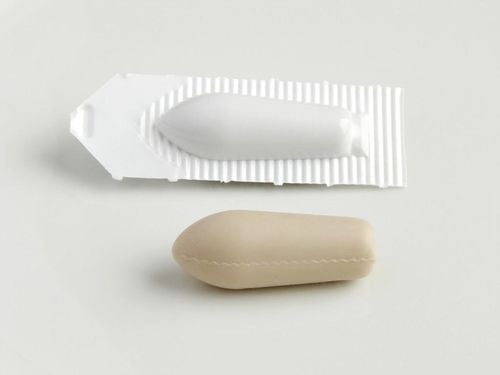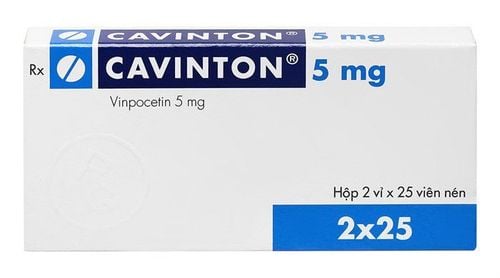Phezam is a neurotropic and neurotonic drug that helps dilate peripheral blood vessels. So what is the effect of Phezam?
1. What is the effect of Phezam?
Phezam, also known as piracetam, or cinnarizine, belongs to the subgroup of neurotropic and neurotonic drugs, peripheral vasodilators, and brain activators. Phezam 400mg + 25mg is effective in treating several diseases such as:
- Chronic and latent cerebral insufficiency due to arteriosclerosis
- Arterial hypertension
- Stroke and post-stroke due to cerebral ischemia with vascular dystonia
- Post-traumatic encephalopathy
- Encephalopathies due to organic psychosis with memory disorders and other cognitive functions or emotional disorders
- Labyrinth disorders such as tinnitus, dizziness, nausea or vomiting, nystagmus
- Ménière's syndrome
- Prevention of motor weakness and migraine
- Improving cognitive processes in children with mental retardation
In addition, some other effects of the drug are not listed on the approved drug label, but in some cases, the doctor may prescribe the use of Phezam. Therefore, before taking the drug, consult your doctor.
2. How to use Phezam
Phezam 400mg + 25mg is prepared in capsule form. The dosage will depend on the patient's condition and age.
- For adults, take 1-2 capsules 3 times a day for 1-3 months
- For children, take 1-2 capsules 1-2 times a day
Patients can take the medicine with or without food, before or after meals. However, to reduce stomach irritation, you can take it with food and swallow the whole pill with a full glass of water, do not chew or break the pill.
3. Unwanted effects when using Phezam
Phezam 400mg + 25mg can cause some unwanted and common side effects, including:
- Skin reactions
- Sensitivity to light
- Digestive disorders
Before prescribing a drug, the doctor always considers the benefits and effectiveness of Phezam. When using Phezam, unwanted effects can still occur. Therefore, when there are unusual symptoms, especially when there is a serious allergic reaction with accompanying signs such as severe dizziness, difficulty breathing, and rash, ... the patient needs to immediately notify the doctor or nurse for immediate medical intervention.
4. Some notes when using Phezam
Some notes when using Phezam 400/25mg include:
- Inform about a history of allergy to Phezam, hypersensitivity to piracetam, cinnarizine, or any other allergies. Phezam may contain inactive ingredients that can cause allergic reactions or other serious problems.
- Inform about the medications you are taking including prescription, non-prescription, herbal and dietary supplements, foods, dyes, or preservatives.
- Contraindicated in patients with severe renal failure, porphyrin metabolism disorder, hemorrhagic stroke, Huntington's disease, and liver failure.
- Use Phezam with caution in cases of increased intraocular pressure, lactase deficiency or galactosemia, glucose or galactose malabsorption syndrome, Parkinson's, and pregnant and lactating women.
If you forget to take a dose of Phezam 400/25mg, take it as soon as possible. However, if the time you remember is close to the time of the next dose, skip the missed dose and continue taking or injecting the medicine as scheduled. Do not use more medicine than prescribed. Overdose of Phezam or swallowing it can cause serious symptoms such as nausea, vomiting, abdominal pain, difficulty breathing, fainting, etc.
5. Drug interactions
Some drugs that can interact with Phezam 400/25mg include:
- Central nervous system depressants
- Tricyclic antidepressants
- Antihypertensives and vasodilators
- Thyroid hormones
- Anticoagulants
6. How to store Phezam
Store Phezam capsules at room temperature below 30 degrees Celsius, away from light and away from damp places. Do not store Phezam in a damp place or in the freezer and keep away from heat and fire. Different medicines will have different storage methods, so read the instructions for storing Phezam on the packaging carefully, or ask your pharmacist.
To use the medicine safely, take Phezam exactly as directed by your doctor, do not overdose, and use less or longer than prescribed. Use Phezam regularly to get the most benefit from it and can stop using the medicine if you see any new unusual signs appear or the condition does not improve. Patients should not abuse the medicine for too long. This does not make the patient's condition better but also increases the risk of unwanted effects.
To arrange an appointment, please call HOTLINE or make your reservation directly HERE. You may also download the MyVinmec app to schedule appointments faster and manage your reservations more conveniently.













